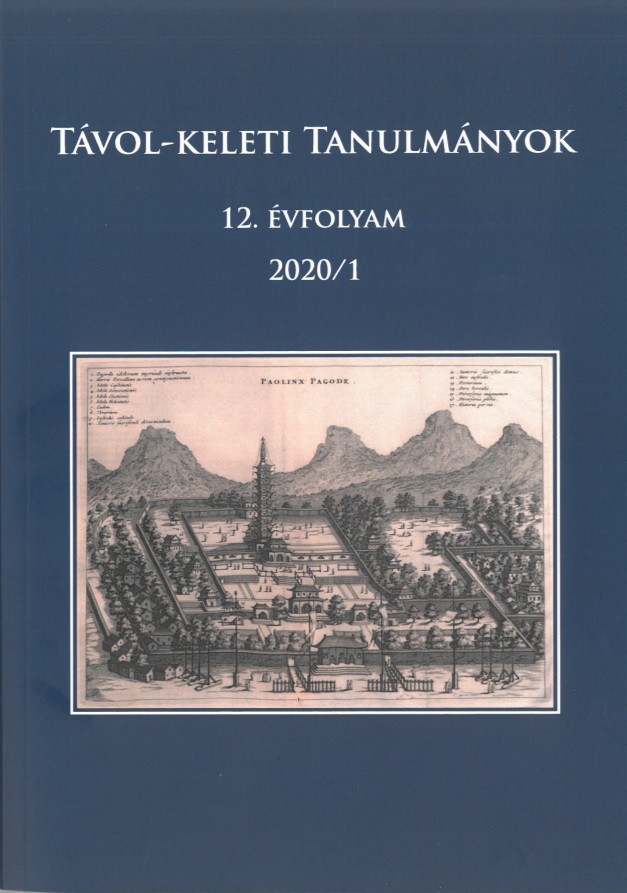Bügsiin Khüree Monastery in North Mongolia: Case Study related to the History of Mongolian Buddhist Monasteries
Published 2021-02-25
Keywords
- Buddhism,
- Mongolian Buddhism,
- Buddhist monasteries,
- memories of monks,
- Buddhist art
How to Cite
Copyright (c) 2021 the author(s)

This work is licensed under a Creative Commons Attribution-NonCommercial 4.0 International License.
Abstract
Bügsiin Khüree (Bügsīn xürē), situated in the present area of Tömörbulag District, Khöwsgöl Province, was one of the major monasteries of Mongolia before the persecution of 1938. The monastic community started its services in 1736 in a felt yurt. The monastery expanded and became an important centre of education and worship with a total of 16 temple buildings, 1,000 monks, schools for philosophical, tantric, astrological, and medical studies, special religious events and unique art. The present article cites the memories of an old monk of the monastery, as well as a detailed description written by his uncle, Ven. Süx Gotow, whose book contains specific details about Bügsiin Khüree, and also provides authentic information about the general features of old Mongolian monasteries.
References
- Bijiya Dašjeweg szerzetes, Gandantegčenlin kolostor, Ulánbátor, 2007. augusztus 27. (Majer, Zsuzsa – Teleki, Krisztina)
- Bijiya Dašjeweg szerzetes, Möröngīn xürē Gandandarǰailin kolostor, Xöwsgöl megye, Mörön, 2017. június 16. (Teleki, Krisztina)
- Birtalan Ágnes 2006: „A mongol nádom.” In: Birtalan Ágnes (szerk.): Mongol játékok és versenyek. (Kőrösi Csoma Kiskönyvtár 27. Szerk. Ivanics Mária). Budapest: Akadémiai Kiadó, 11–16.
- Bügsīn xürē. http://www.mongolianguide.mn/mn/hu/b/813/ (2020.09.16.)
- Cedendamba, X. – Lxagwa, L. – Soninbayar, Š. – Luwsanbaldan, E. – Otgonbātar, R. – Amgalan, N. 2009. Mongolīn süm xīdīn tǖxen towčōn [Mongólia kolostorainak történeti összefoglalója]. Ulānbātar: Admon.
- Documentation of Mongolian Monasteries. http://www.mongoliantemples.org (2020.09.16.)
- Erdenebileg, B. 2012, Mongolīn süm xīdīn tǖxēs [Mongólia kolostorainak történetéből]. Tagnūlīn Yerönxī Gajar. Tusgai arxiw – Gandantegčenlin xīd. Erdem soyolīn xürēlen, Ulānbātar: Soyombo Printing.
- Gotow, Süx 1999. Jasagt xan aimgīn Dalai günī xošūnī Bügsīn xürē Dašgendunǰambalin xīdīn cadig oršwoi [A Jasagt kán megye, Dalai gün járásában álló Bügsīn xürē Dašgendunǰambalin kolostor törénete]. Ulānbātar.
- Interview with Tseweenlozol monk. http://www.mongoliantemples.org/oralhistorypdfs/L292.pdf (2020.09.16.)
- Kuz`min, S. L. – Oyūnčimeg, J̌. 2014. Socializmīn esreg 1932 onī Mongol dax` boslogo [A szocializmus elleni mongol felkelés, 1932]. Ulānbātar: Mönxīn Üseg.
- Majer, Zsuzsa – Teleki, Krisztina 2011. „On the Current Condition of 190 Old and Present-Day Monastic Sites in the Mongolian Countryside.” Zentralasiatische Studien 39: 93‒140.
- Majer, Zsuzsa – Teleki, Krisztina 2014. A Cam tánc hagyományának felélesztése Mongóliában. Reviving the Cam Dance Tradition in Mongolia. Hagyományos Mongol Műveltség II. Traditional Mongolian Culture II. DVD Series. Budapest.
- Majer, Zsuzsa – Teleki, Krisztina 2019. Öndör nastan lam narīn yaria. ХХ jūnī exen üyeīn xürē xīdǖdīn talār awsan yarianūd I (2006–2009) [Idős szerzetesek emlékezete. Interjúk a XX. század eleji mongol kolostori életről I. (2006–2009)]. Ulānbātar: Soyombo Printing.
- Süx Gotow szerzetes, Xöwsgöl megye, Mörön, 2009. augusztus 10. (Majer, Zsuzsa – Teleki, Krisztina)
- Teleki, Krisztina 2009. „Building on Ruins, Memories and Persistence: Revival and Survival of Buddhism in the Countryside.” Silk Road 7: 64‒73.
- Teleki, Krisztina 2019. Öndör nastan lam narīn yaria. ХХ jūnī exen üyeīn xürē xīdǖdīn talār awsan yarianūd II (2007–2017) Idős szerzetesek emlékezete. Interjúk a XX. század eleji mongol kolostori életről II. (2007–2017). Ulānbātar: Soyombo Printing.

